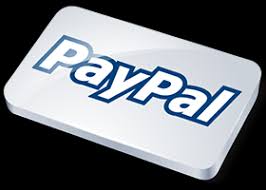Payroll management is an essential function for any company, no matter how big or small. Accurate and timely employee compensation is critical to maintaining a productive workplace, and a well-managed payroll system may assist small businesses to meet this obligation and avoid potentially severe fines from the Internal Revenue Service and individual states. The intricacy and significance of payroll processing lead many businesses to hire outside assistance. However, to set up a reliable system, you must first choose which aspects of payroll processing you will handle internally and which you will outsource. Then, you can maintain control over payroll by keeping records up-to-date and tracking employee hours so that processing payroll is a simple, accurate affair. In this piece, we’ll explain how to manage payroll for small businesses while also highlighting how it works with Intuit and Quickbooks.
What Does Manage Payroll Mean?
The term ” manage payroll” refers to the administrative process of tracking and reporting financial data pertaining to an organization’s employees, including their working hours, their wages, and any applicable withholding taxes.
However, payroll management can be difficult and risky due to the sensitive nature of employee data, the complexity of tax calculations, and the potential for direct deposits into employee bank accounts. Hence, legal compliance necessitates that you know how to properly manage payroll.
What Is Payroll Process in HR?
If you’re in charge of human resources or payroll, you know how important it is to make sure employees get paid on time and accurately. One slip-up is all it takes to damage an organization’s credibility and lose the faith of its personnel. Hence, handling payroll correctly is an important responsibility.
The term “payroll processing” refers to the process of disbursing money to workers, taking into account their classification, salary, and also any applicable deductions. In addition, it involves paying and reporting employment taxes to HMRC.
However, HR’s involvement in payroll processing varies system and organization-specific. If an organization uses a payroll service, HR might not have to worry about much, whereas if they use payroll software, HR might be in charge of everyone’s paychecks.
Regardless, this must be done in a timely manner that complies with applicable requirements and the organization’s pay schedule.
Due to its numerous variable factors, including pay scales, employee classifications, promotions, and terminations, payroll processing can be difficult to handle.
Hence, to prevent the most effective error, it is crucial to have checkpoints in place at the crucial stages of payroll processing.
What Are the Basics of Payroll?
Payroll is the compensation that a company owes its workers for a specific time period and on a specific day. The basic payroll procedure may involve;
- Keeping track of the hours worked by employees
- Figuring out salary and wages, and
- Disbursing funds via cheque or direct deposit.
What Are the Types of Payroll?
There are basically four payroll schedule types with each having its own advantages and disadvantages, which help to identify which strategy is most appropriate for a particular firm.
They are;
- Weekly
- Bi-weekly
- Semi-monthly
- Monthly
Manage Payroll for Small Businesses
Payroll processing is generally one of the most challenging, tiresome, and time-consuming business tasks for small business owners. On the other hand, it’s also one of the most important ones. Payroll issues can depress employee morale, squander vital company resources, and bring even the most prosperous companies to their knees.
Hence, it is essential for small businesses to effectively manage their payroll in a timely manner. And one that complies with applicable requirements and the organization’s pay schedule.
There are varieties of ways in which small businesses can manage Payroll. Regardless of which, the entire procedure includes gathering personnel information and accurately entering it into a file or document. Each paycheck will need to be prepared for each pay period, with accurate tax calculations being a must. Making sure your staff and the relevant government agencies get their pay on time and accurately is the end of the process. Here are the three ways to handle or manage payroll.
#1. Manual Processing
Here, to print checks or send direct deposits, you’ll need to complete all of the payroll math and processing yourself. Also, you’ll have to figure out a strategy for keeping track of payroll records and payments on your own.
#2. Payroll Software
With the help of one of the numerous available payroll software, you can simplify Payroll processing. This can help you save money, reduce your administrative workload, and pay your employees and tax authorities on time.
#3. Outsourced Payroll Service
Finally, you may have a payroll service take care of everything on your behalf. The provider will take care of everything related to managing your software’s database of employees and processing payroll on schedule. Prices start at $40/month and go up from there, with additional expenses per worker. Because of the individual nature of your needs, many businesses insist that you first get in touch with them before they can provide an estimate for their services.
Notifying your payroll service of new employees and ensuring the necessary funds are available in your bank account is all that’s required to handle your payroll in this way. It’s the least labor-intensive method, freeing you up to focus on other aspects of running or expanding your company.
How to Manage Payroll for Small Businesses
If you’re looking for ways to manage your payroll processes, here are hints on how small businesses can manage their payroll!
#1. Apply for an Employer Identification Number
It is necessary to obtain an EIN before you can begin paying employees (EIN). Your EIN serves as a unique identifier for your company in the same way that your SSN does for you as an individual.
An EIN is required by many authorities before a business owner can do things like apply for a license, file payroll taxes, or even open a bank account. The location of your company’s headquarters will determine whether or not you require a state employer identification number (EIN) in addition to your federal EIN.
#2. Set Salary Status and Pay Frequency
As a business owner, you have a number of important choices, including how often you pay employees as well as what kind of wages they receive. Let’s go a bit deeper into this;
Pay frequency, sometimes called pay schedule, refers to the timing and regularity of employee payments. Be sure you’re not falling short of the minimum wage in your location by checking both federal and state laws. Weekly, biweekly, and monthly are generally the various examples of pay periods. Whatever you decide, however, what matters most is being consistent and making timely payments.
Salary status on the other hand involves determining the amount of employee salary. Both hourly rates (for nonexempt workers) and salary arrangements are viable options (for exempt employees). The proper compensation status is heavily influenced by the job of the employee and the specific needs of your small business.
#3. Learn and follow the Laws Regarding Wages
In any case, you must ensure that your organization abides by all applicable local and national regulations. This necessitates that you (or someone in your firm) be familiar with your monetary and legal responsibilities as an employer.
Moreover, pay the appropriate amount of federal, state, and local taxes, as well as income taxes for each worker. This includes FICA (Social Security and Medicare) and other employment-related taxes. You should verify your payroll system to guarantee on-time and proper payment of all employees. In addition, make sure that your payroll tax deposits are made on a consistent basis and in accordance with your tax obligations.
#4. Establish a Payroll Procedure
A payroll system usually involves any program that facilitates the process of calculating and managing employee pay. There are often three possibilities:
- Manual
- Outsourced
- Software
Regardless, of which you decide, it’s crucial to think carefully about a number of issues before settling on a payroll system for your company. Hence, keep the following in mind at all times:
- Budget
- Number of employees
- Confidence. How sure are you that you can manage payroll accurately?
#5. Describe and Establish Your Payroll Procedures and Policies
Standardizing your payroll procedures is essential before processing your first payroll. This guarantees that all parties involved in the payroll process, from upper management to human resources to employees, are on the same page with regard to the payroll period, expected paycheck amounts, paid time off, and other benefits.
#6. Keep Track of Time With a Dedicated Software Program
If you pay your staff on an hourly basis, a timekeeping system is essential for monitoring their efficiency and determining their compensation. It’s crucial to design a user-friendly time monitoring system that’s also difficult to game. There are a number of options for handling time sheets, including integrated platforms that can sync with your payroll software for the most precise data possible.
#7. Monitoring Your Cash Flow
To run out of money before being able to pay personnel is every business owner’s worst nightmare. Reviewing your cash flow will assist you to figure out why you always seem to be short on the payroll.
Not having enough money to pay your employees has generally been every business owner’s worst nightmare. If you find that you are chronically short on payroll time, analyzing your cash flow may reveal the underlying cause. Payroll issues, such as overstaffing or overpaying, can be spotted by careful monitoring of cash flow. Moreover, before resorting to drastic measures like withholding wages or downsizing, it is best to attempt to delay a vendor payment or collect outstanding client payments during financially trying times.
#8. Hire a Payroll Coordinator or Manager
It’s no wonder that many businesses choose the easiest yet most dependable option. Employing a professional payroll manager, given the complexity of payroll, especially for medium- to larger companies.
Why not hire someone who is more efficient and skilled at processing payroll so that you can devote more time to growing your business? If you need help with payroll but don’t have the funds for an employee on the books full time, look into contract workers or give the job to an existing employee who has proven themselves to be reliable and capable.
#9. Keep Safe Payroll and Employee Records
There are regulations in place at the federal and state levels that dictate how long payroll data one must keep and where to keep them in the event that authorities require access to them. One must keep for instance time cards for a minimum of two years. While payroll records pertaining to money paid out to employees must be kept for a minimum of three years. There are also regulations in place regarding the final disposition of payroll documents.
What Are 4 Parts of Payroll?
Wages, salaries, overtime, vacation pay, paid holidays, tips, bonuses, tuition reimbursements, and commissions are all part of the payroll. While processing payroll, businesses must determine and report both gross and net earnings for each employee (after deducting tax withholdings and benefits contributions)
What Are the 5 Payroll Steps?
The payroll processing steps include;
- Deciding on an employer identification number.
- Gathering pertinent employee tax data
- Choosing a pay schedule
- Estimating gross pay
- Determining the deductions for each employee
- Determining your net salary, then paying your staff.
What Should a Payroll Manager Do?
The Payroll Manager is responsible for supervising all aspects of the company’s payroll system to ensure that all employees are paid on time, correctly, and in accordance with all applicable laws and regulations.
Does HR Manage Payroll?
Payroll may fall under the purview of human resources (HR), and finance (Finance), or it may be its own independent unit reporting directly to the chief executive officer (CEO).
Manage Payroll Quickbooks
If you’re currently a user of QuickBooks Online and are seeking software to manage your payroll, QuickBooks Payroll is a fantastic option. It’s intended for companies with up to 50 workers or contractors, but it may actually hold as many as 150. The program can instantly process payroll and provide direct deposits on that exact or the following business day. It also interacts seamlessly with QuickBooks Online. The three available plans allow organizations to easily switch between tiers as their needs change and expand. In addition, it provides the option to add retirement savings and health insurance to your subscription.
However, if you use a different accounting program than QuickBooks Online or if your workforce spans more than one state, you may want to investigate alternate options. Also, know that the only accounting software that works with QuickBooks Payroll is QuickBooks Online. Plus, if you’re managing employees in more than just a state, you might need to pay additional monthly tax filing fees.
How Do You Manage Payroll with QuickBooks?
QuickBooks Payroll is a cloud-based payroll solution that enables businesses( small or big) to pay employees, manage employee benefits, and also file payroll taxes all in one location. By automatically calculating, submitting, and paying federal and state payroll taxes, the software saves time.
You can automate payroll processing for workers can once you’ve set everything up. With Quickbooks online, you can manage payroll automatically. However, if you prefer, you may process it manually, either on your computer or with the mobile app.
Conclusion
In order to ensure that their employees are paid accurately and on time and that their company is in compliance with all tax and employment requirements, employers must manage payroll.
Any business needs payroll processing and management. When you manage the payroll system effectively, it can help small businesses for instance maintain a productive workplace and avoid IRS and state fines. Many organizations outsource payroll processing due to its complexity. To create a trustworthy system, you must first decide which payroll processing tasks to outsource and which to manage internally.
Related Articles
- PAYROLL SYSTEM: Definition, Software & Guide
- Small Business Payroll: Best Payroll Software UK Service
- HR SERVICES FOR SMALL BUSINESSES: Functions & Examples of HR Services
- 17 BEST SMALL BUSINESS PAYROLL SYSTEMS 2023, Updated!!!
- COST OF PAYROLL SERVICES AND TAXES
- EXPENSE RECEIPTS: What Is It, How to Make It & Best Apps






